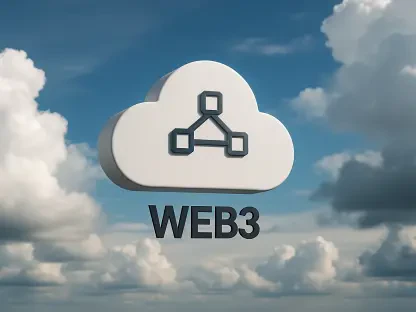Orca Security has recently taken significant strides in bolstering its cloud security platform by introducing source code posture management capabilities. This move aims to enhance security across popular source code management (SCM) platforms such as GitHub and GitLab, aligning with the growing need for comprehensive protection in the software development lifecycle. The initiative seeks to address emerging threats and misconfigurations within CI/CD pipelines, offering a robust and non-intrusive solution for modern cloud security challenges.
Enhancing Security for Source Code Management Platforms
Expanding Security Coverage to SCM Tools
Orca Security’s latest development focuses on extending its protective measures to popular SCM platforms, including GitHub and GitLab. This integration provides an added layer of security by addressing the inherent risks and vulnerabilities that come with using these tools. The company’s aim is to cover the full scope of the development environment, from source code creation to cloud deployment. By incorporating these enhancements, Orca Security is effectively broadening its range of cloud security solutions. This comprehensive approach ensures that security measures are applied uniformly across different stages of software development, mitigating risks that could arise from misconfigurations and other vulnerabilities.The expanding security coverage to SCM tools is particularly crucial in today’s digital environment, where continuous integration and continuous delivery (CI/CD) pipelines are becoming the norm. By focusing on the configurations and settings of these SCM platforms, Orca can address potential security risks that might otherwise go unnoticed. This is especially important as SCM platforms often house sensitive code and documentation, making them a prime target for cyber attackers. This initiative not only aims to protect the source code but also ensures that the entire development process remains secure, from the initial coding stages to the final deployment in the cloud.
Mitigating Configuration Risks
One of the critical areas of focus for Orca is tackling the configuration risks associated with SCM platforms. As the use of these tools becomes more widespread, so do the mistakes in their setup and management. Misconfigurations can result in significant security breaches, exposing sensitive information and making systems vulnerable to attacks. Orca Security’s new capabilities aim to identify and rectify these misconfigurations. By maintaining a vigilant eye on the settings and configurations of SCM tools, the platform can preemptively address potential issues before they manifest as security threats. This proactive approach is essential in safeguarding against the growing array of cyber threats targeting the software development process.The platform’s ability to continuously monitor and correct these configuration issues is a game-changer for many organizations. Traditional security measures often miss the nuances and complexities involved in SCM configurations, leaving gaps that attackers can exploit. Orca’s integrated approach provides a solution that looks at these common yet overlooked areas, ensuring that all aspects of the SCM tools are secure. This methodology not only improves the immediate security posture but also builds a robust foundation for future security efforts, allowing organizations to focus more on innovation rather than constantly worrying about potential breaches.
CI/CD Pipeline Protection
Addressing CI/CD Vulnerabilities
In addition to enhancing SCM security, Orca Security is prioritizing the protection of CI/CD pipelines. As these pipelines automate the software deployment process, they become a tempting target for cyber attackers. Compromising a CI/CD pipeline can give attackers access to the entire software lifecycle, making it crucial to implement stringent security measures. Orca’s new capabilities focus on securing these pipelines by detecting misconfigurations and vulnerabilities that could be exploited during the development and deployment phases. By integrating security into the CI/CD process, Orca ensures that the software remains secure throughout its lifecycle, from development to deployment.The emphasis on securing CI/CD pipelines is not just about protecting individual components but ensuring the integrity of the entire software development and deployment chain. By identifying and fixing vulnerabilities at each stage, Orca offers a holistic solution that covers from source code to production environments. This layered security approach minimizes the risk of unauthorized changes, data breaches, and other malicious activities that could compromise the software lifecycle. The protection of CI/CD pipelines thus becomes a critical pillar in Orca’s comprehensive cloud security strategy, aligning with the industry’s best practices for secure software development.
Ensuring Continuous Security Compliance
With the implementation of these advanced security measures, Orca aims to maintain continuous security compliance within CI/CD pipelines. This involves not only detecting vulnerabilities but also providing ongoing monitoring to ensure that security standards are consistently met. Continuous compliance is critical in a rapidly changing environment where new threats emerge regularly. By offering tools that ensure ongoing compliance, Orca Security helps organizations adhere to best practices and regulatory requirements. This approach minimizes the risk of breaches and ensures that security measures evolve in tandem with emerging threats, providing a resilient defense against potential attacks.The continuous compliance feature extends beyond mere vulnerability detection. It includes regular audits and checks to ensure that the security measures are still effective against new and evolving threats. Orca’s platform can automatically update its security protocols based on the latest threat intelligence, ensuring that organizations are always protected against the most current threats. This proactive approach is invaluable in maintaining a secure development environment, particularly as regulatory landscapes become more complex and demanding. Adhering to these regulations not only protects against attacks but also avoids potential penalties and reputational damage associated with non-compliance.
Automated Inventory and Standards Referencing
Enhancing Visibility with Automated Inventory
Orca’s new features also include an automated inventory system for both existing and newly added repositories. This capability enhances visibility into the development environment, allowing security teams to track and monitor changes effectively. Such comprehensive oversight is vital for maintaining a secure development process and identifying potential risks promptly. The automated inventory system helps in cataloging repositories, making it easier to ensure that all elements of the development environment are secure. This aspect of Orca’s platform is designed to provide a holistic view of the security posture, enabling organizations to keep track of numerous repositories efficiently.Enhanced visibility through automated inventory not only simplifies the management of development environments but also accelerates the identification and rectification of risks. In the fast-paced world of CI/CD, changes happen frequently, and keeping track manually is often impractical and error-prone. Orca’s automated inventory system ensures that every change, no matter how minor, is logged and analyzed for potential security implications. This continuous monitoring is critical for maintaining a high level of security even as the development environment evolves. Furthermore, it allows security teams to pinpoint exactly where and when a potential issue arose, facilitating quicker and more effective responses.
Leveraging Trusted Third-Party Standards
To fortify its security measures, Orca references trusted third-party standards like those from the Open Source Security Foundation (OSSF) and Legitify. These standards provide a benchmark for detecting misconfigurations and deviations from best practices, ensuring that Orca’s security solutions are aligned with recognized guidelines. By leveraging these established standards, Orca Security enhances its ability to identify and address vulnerabilities. This approach not only builds credibility but also ensures that the security measures are comprehensive and up to date with industry best practices, providing a reliable foundation for securing the development environment.The use of third-party standards adds an extra layer of trust and reliability to Orca’s security solutions. Adhering to these benchmarks ensures that the platform is not only effective but also recognized and trusted within the industry. This is particularly important for businesses that need to demonstrate compliance with stringent security requirements. By aligning with well-established standards, Orca can offer its clients the assurance that their security measures are not only robust but also certified by recognized authorities. This approach builds confidence among stakeholders, clients, and regulatory bodies, further establishing Orca Security as a leader in the cloud security landscape.
Advanced Side-Scanning Technology
Non-Intrusive Security with Side-Scanning
Orca Security employs its proprietary Side-Scanning technology, an agentless solution that offers a non-intrusive way to collect data from cloud workloads’ runtime block storage. This method, combined with metadata from cloud provider APIs, allows for a thorough analysis of potential risk hotspots without disrupting the development process. Side-Scanning technology is particularly advantageous because it eliminates the need for agents, which can be intrusive and resource-intensive. By adopting this non-intrusive approach, Orca ensures that security measures do not hinder the efficiency and workflow of development teams, maintaining a seamless development process.The innovative nature of Side-Scanning technology cannot be overstated. Traditional agent-based security solutions often add complexity and overhead to the development environment, potentially slowing down operations and impacting performance. Orca’s agentless approach provides a significant advantage by streamlining security processes while maintaining high levels of protection. The ability to gather and analyze runtime data without deploying intrusive software agents allows for real-time threat detection and response, ensuring that security measures are both effective and unobtrusive. This balance between security and operational efficiency is a key component of Orca’s strategy, making it an attractive option for organizations looking to enhance their cloud security posture.
Identifying Risk Hotspots Efficiently
Orca Security has recently advanced its cloud security platform by adding source code posture management capabilities. This enhancement aims to elevate security measures across major source code management (SCM) platforms like GitHub and GitLab. With the growing complexities in the software development lifecycle, the need for a comprehensive security solution has never been greater. Orca Security’s latest initiative addresses emerging threats and misconfigurations found within Continuous Integration and Continuous Deployment (CI/CD) pipelines. The new capabilities offer a robust, non-invasive solution to the modern challenges facing cloud security. By integrating these features, Orca Security seeks to provide a more secure and streamlined approach to managing source code, thus safeguarding the integrity of the development process. This proactive move not only mitigates risks but also facilitates a more efficient workflow, ensuring that security protocols keep pace with rapid development and deployment cycles. Overall, Orca Security’s enhancement is a significant step toward fortifying the entire software development ecosystem against evolving cyber threats.









